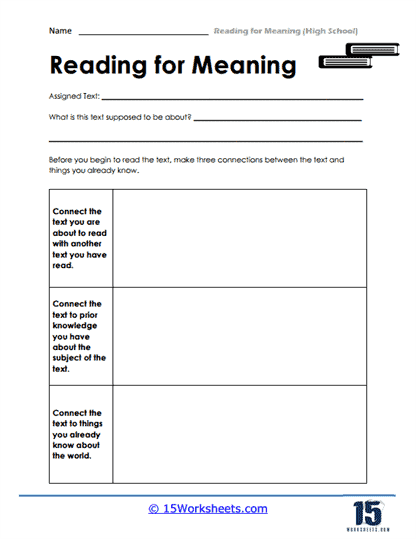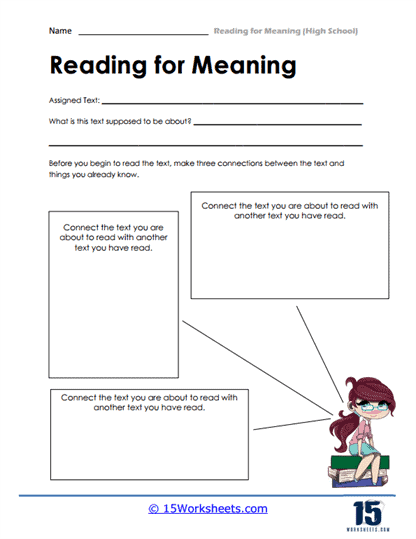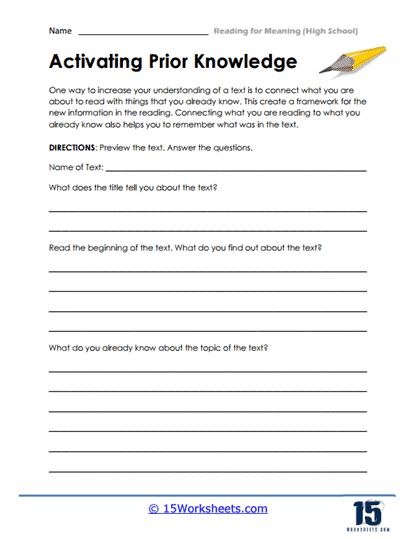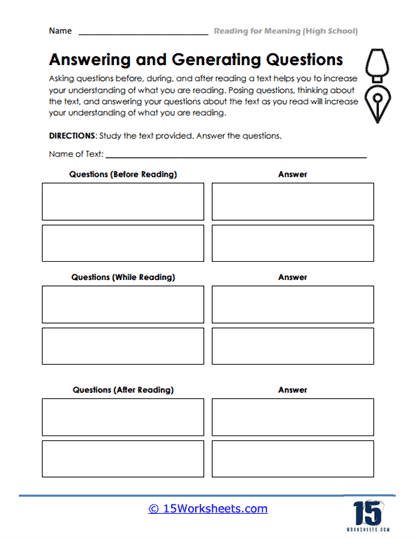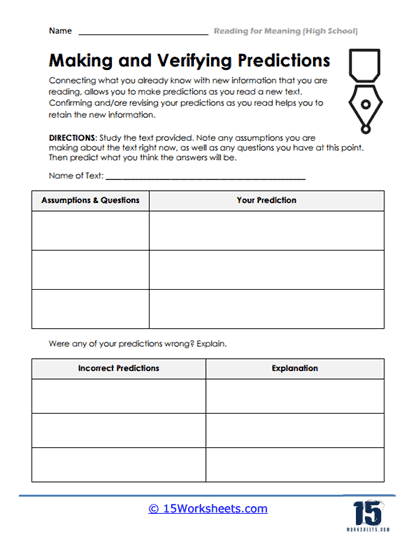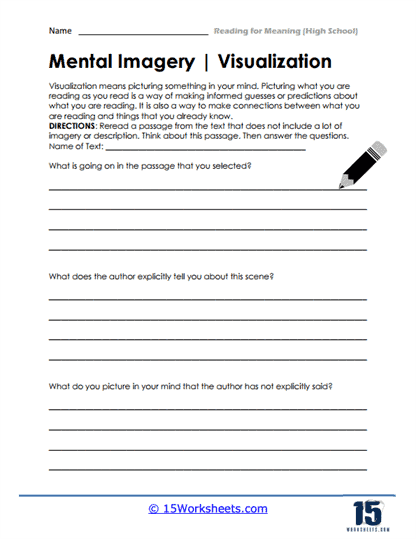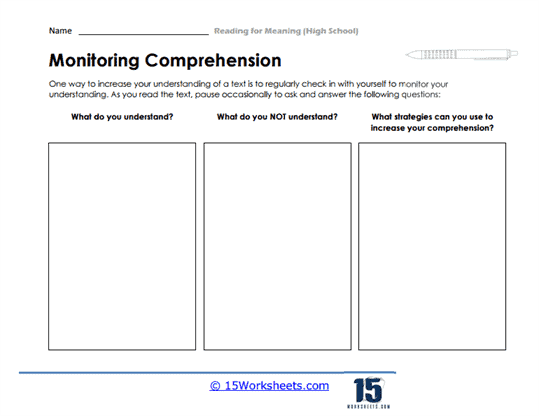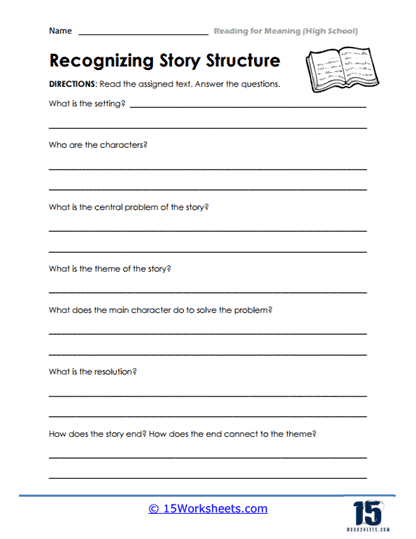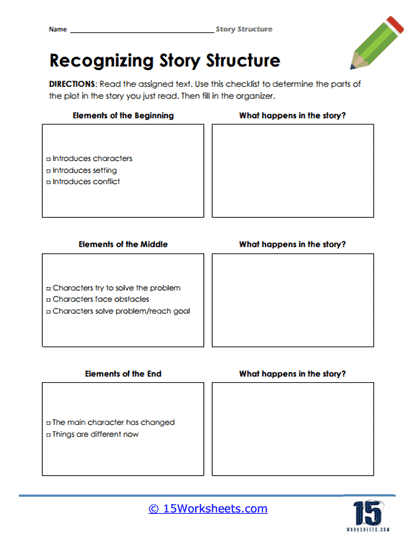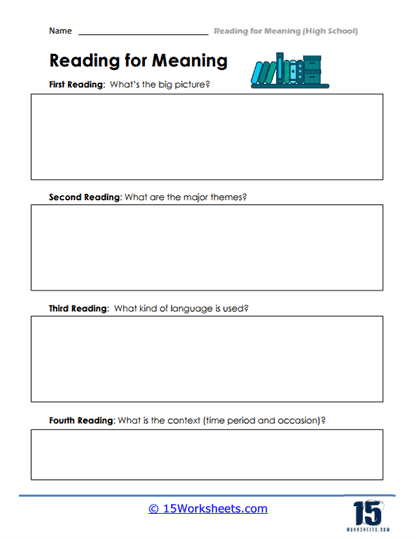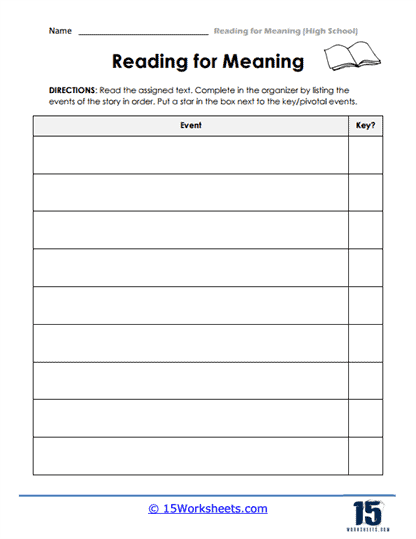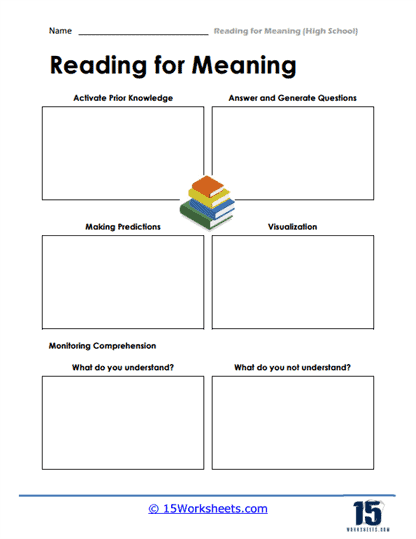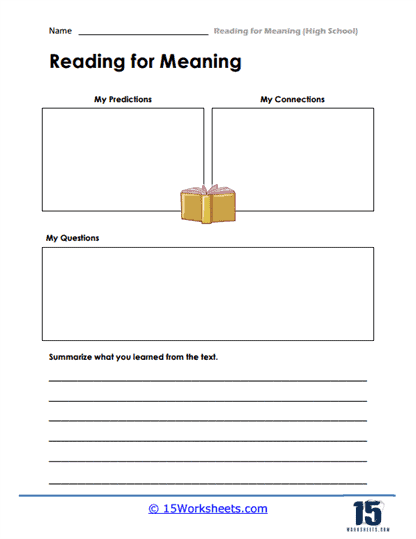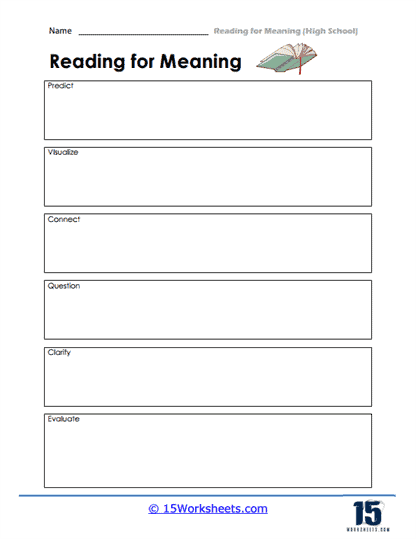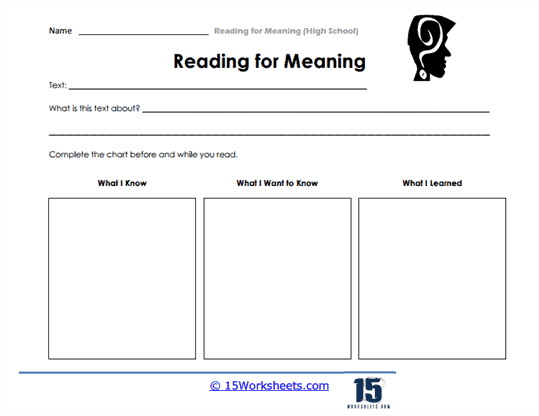Reading for Meaning Worksheets
All About These 15 Worksheets
When parents read a storybook to their children or when the teachers introduce words and sentences to a classroom, the primary focus is on correct word pronunciation. Adults often sound out the words and explain the meaning of difficult words.
Even though this pronunciation and word-decoding are important, the comprehension of overall text is equally essential. Without understanding the meaning behind the written word, reading has no purpose.
Read the following passage to understand:
“Cartesians, who hold that the essence of the soul is to think, can, of course, solve it a priori, and explain the appearance of thoughtless intervals either by lapses in our ordinary memory or by the sinking of consciousness to a minimal state, in which perhaps all that it feels is a bare existence which leaves no particulars behind to be recalled.” (The Principles of Psychology by William James)
Even though you can (probably) read all the words in the above lines, chances are you cannot explain the meaning of the same (unless you’re a psychologist, of course). Reading without meaning is frustrating for the reader and lacks purpose. Imagine reading 5 more pages of the text above. Not only will you lose interest soon, but you’ll also feel discouraged by the activity.
Hence, the educationists focus on the concept of reading for meaning. But what exactly is reading for meaning? Continue reading to find out!
Reading For Meaning
When the purpose behind reading is to discuss and understand the meaning of the words being read, it is called reading for meaning. Parents and teachers can assist with reading for meaning by asking certain targeted questions. These questions can be literal and inferential.
What are Literal Questions?
Literal questions concentrate on the text’s who, what, where, and when. The answers to literal questions can be found in the text and pictures of the book or story. These questions leave little room for interpretation, and being able to answer them is the basic measure for understanding fiction and nonfiction text.
After every reading lesson, practice asking literal questions from your students.
- Always begin with the W’s: who, what, where, and when and ask questions such as:
- Name the characters? Which character is your favorite? Which is your least favorite character?
- Who said or did <quote or action>?
- What happened in the beginning? Last?
Children are going to struggle initially while answering these questions. It is, therefore, essential to encourage them to read the text again and find the particular page or passage that holds the answer to the question that’s being asked of them. “Reading for meaning” requires supporting the students until they become familiar with the idea of focusing on the meanings of the words rather than just reading them.
What are Inferential Questions?
After the children have grasped the concept of literal questions, move on to the inferential questions. These open-ended questions force the students to think beyond the text and use their imagination. How would they like to change the ending? What did they think of the characters doing a certain action? What would happen to the character if the story didn’t end here? Healthy discussions expand creativity and help with out-of-the-box thinking. Ask them to support and defend their answers using the information from the text.
Group discussions and comprehension activities are a great opportunity to see the students’ comprehension levels.

